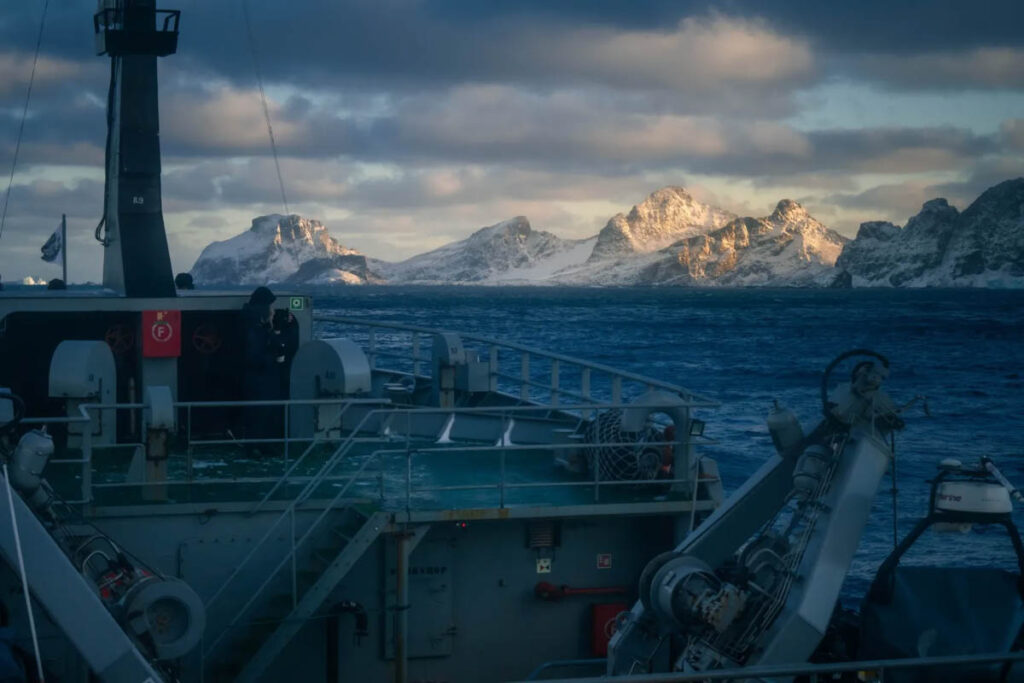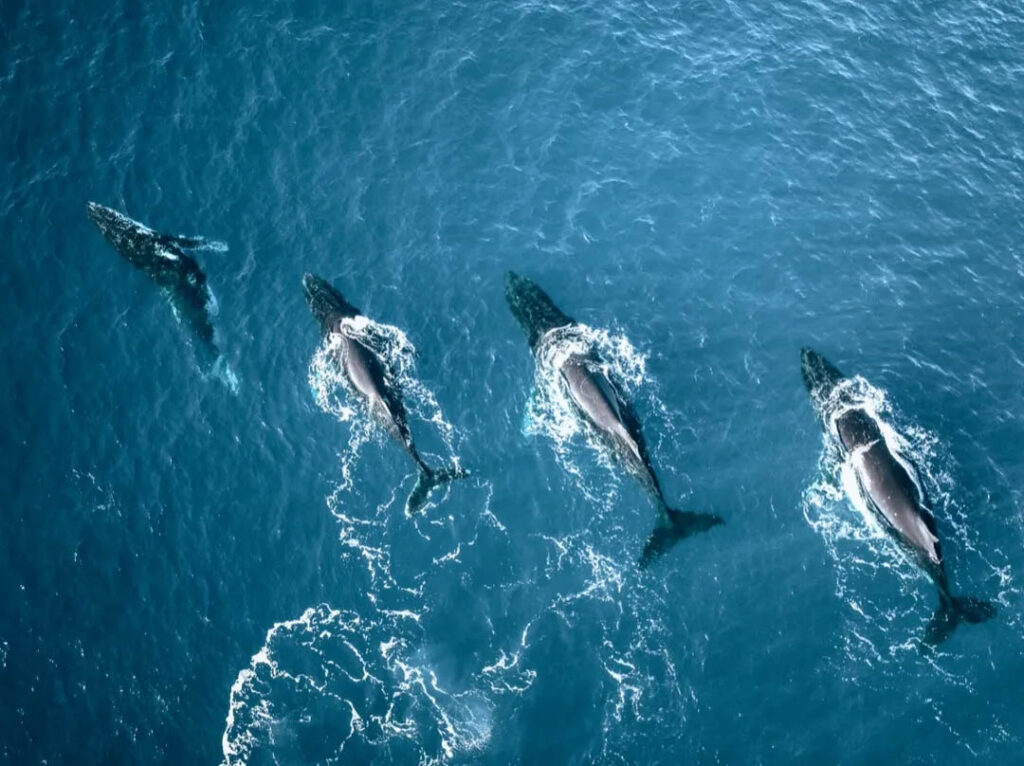This shouldn’t be happening!
As hundreds of whales feed, industrial krill supertrawlers move in—massive vessels from China, Norway, and Ukraine. These ships haul in enormous quantities of krill, often dragging their nets straight through pods of whales, seals, and rafts of penguins.
For the third consecutive year, Sea Shepherd has returned to Antarctica. This time, we’ve arrived later in the season, staying longer, and operating deeper into krill fishing territory than ever before. With most tourism and research vessels already gone due to worsening weather and advancing ice, industrial fishing continues—largely unchecked. Sea Shepherd is here to make sure the destruction doesn’t go unanswered.
What we’ve witnessed in just the first days has been both breathtaking and deeply alarming.
“On Tuesday we woke up to a feeding frenzy. Hundreds—probably over a thousand—whales surrounding the Allankay, feeding on krill,” said Captain Alex Cornelissen, Sea Shepherd Global CEO. “None of us on board had ever seen anything like it, not even the returning crew from last year. And still, trawlers were there, fishing right in the middle of it.”
This isn’t a rare accident. It’s a calculated strategy. Krill trawlers often follow whales, knowing they lead to dense swarms of krill. The fishing industry watches the whales—and moves in.
“We meticulously navigated our small boat to keep the safe distance between us and the wildlife,” said Cornelissen. “Only to see the krill vessels drag their net through the middle of all this activity.”
One Ukrainian vessel was caught on camera doing exactly that. So was a Norwegian company responsible for more than half of all krill extracted from Antarctica.
“It’s outrageous that this is allowed. This area is bursting with life. It should be protected, not plundered,” said Cornelissen.
But what’s happening here is driven by choices made elsewhere—by corporations and supply chains that fuel demand for krill.
The presence of supertrawlers in these rich feeding grounds isn’t just disruptive—it’s dangerous. Last season, at least three whales were officially reported caught in krill nets. But those are just the documented cases. The true number may be far higher.
This year, scientists have joined Sea Shepherd’s crew on the Allankay to document marine life and gather hard evidence of how industrial activity intersects with it. Their data tracks how often krill vessels operate near whales, how close they get, and how that impacts wildlife behavior. Entanglement, competition for food, and displacement from feeding grounds are immediate threats to species still struggling to recover from decades of exploitation.
The goal is to bring this evidence to CCAMLR—the Commission for the Conservation of Antarctic Marine Living Resources—which continues to delay long-proposed protections. While most member states support new marine protected areas, political impasses have repeatedly stalled progress.
This isn’t food for people. Krill is being turned into pet food, fish feed for salmon farms, and omega-3 supplements, despite the wide availability of plant-based alternatives. Though it happens at the edge of the world, the impact is global.
To challenge that demand, Sea Shepherd launched SaveKrill.com, a platform where supporters can take direct action—calling on retailers to stop selling krill-based products and withdraw support for this destructive industry.
“Every time someone buys a krill supplement, they’re supporting the destruction of Antarctica,” said Cornelissen. “It has to stop.”
Our campaign doesn’t end at sea. It continues wherever decisions are made to profit from Antarctic exploitation.
That includes CCAMLR. Despite mounting scientific evidence and growing ecological urgency, this governing body has so far failed to establish the protections these waters urgently need. Last year, proposals to create new marine protected areas were once again delayed.
Still, pressure works. In late 2023, a proposal to increase krill catch limits was struck down—thanks in part to global response sparked by Sea Shepherd’s campaign footage. It was a rare but powerful reminder: when the world sees what’s happening, it pushes back.
But holding the line isn’t enough. The goal isn’t to slow the damage—it’s to stop it.
“I cannot think of an area in the ocean with a higher need for protection than where we are now,” said Cornelissen. “The creation of a marine reserve north of Coronation Island and including the Antarctic Peninsula should be a top priority.”
The science is here. The footage is undeniable. And the consequences are unfolding in real time.
What’s missing is the political will.
Sea Shepherd will continue documenting and confronting the destruction in Antarctica—and with your support, we can do even more.









